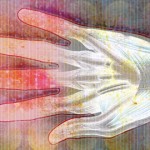Ultrasound evaluation may identify the etiology of median nerve impingement by recognizing structural signs, such as severe tenosynovitis, bifid median nerve, a persistent median artery, a ganglion cyst, a neoplasm, a lipoma, accessory muscles and calcium/uric acid/amyloid deposits. US may also demonstrate a vastly swollen median nerve, which increases the probability of injury from injection without US guidance.21
Tenosynovitis appears as a hypoechoic halo surrounding a tendon due to either thickening of the tenosynovium, fluid accumulation or both. Compression with the transducer to look for fluid displacement may help differentiate tenosynovitis from effusion.
In our clinic, we routinely perform an evaluation of the ulnar nerve in the ulnar canal because injury to the deep (motor) branch may cause hand weakness (including the first digit) and potentially mimic median neuropathy.
Carpal Tunnel Treatment?
Treatment of CTS includes risk factor mitigation, cock-up splints to prevent night-time wrist flexion, medication to treat inflammation, corticosteroids orally or by injection to mitigate inflammation, surgical decompression with transection of the TCL and removal of offending structures, such as cysts.
When injection is an option, US evaluation has been proved to increase the efficacy and safety of carpal tunnel injection and may help direct the optimal injection location.22 The normal anatomy of the carpal tunnel contents may be distorted due to disease process. Ultrasound can identify anatomic alteration, thereby preventing further damage to the median nerve. As seen with our patient, blind injection using usual topographic landmarks risked impaling the median nerve. Ultrasound was necessary to visualize significant FPL tenosynovitis that resulted in migration of the median nerve to a distinctly abnormal position, one that would subject it to damage with a topographic landmark-guided injection.
By delineating the etiology of the CTS, US may inform overall treatment decisions. There’s an opportunity for conservative treatment when US reveals the presence of significant tenosynovitis causing median nerve compression, as in our case. You can target tenosynovitis with a combination of medication directed at the underlying disease process (rheumatoid arthritis, in our patient’s case) as well as US-guided injections directly into the area or areas of flexor tenosynovitis that appear to be compressing the median nerve. We also recommended continued use of cock-up splints at night in our case.
US may also prove useful after surgery because surgery doesn’t always alleviate symptoms. Continued or recurrent symptoms may be due to iatrogenic nerve injury, incomplete TCL release, perineural fibrosis or severe presurgical damage to the median nerve.23 Ultrasound’s capacity to visualize these complications may prove useful in delineating the cause of persistent symptoms after surgery.
Conclusion
Ultrasound has become an important tool for CTS evaluation. This inexpensive and noninvasive technique offers criteria to confirm a clinical diagnosis, and it demonstrates morphology that helps avoid treatment pitfalls.


